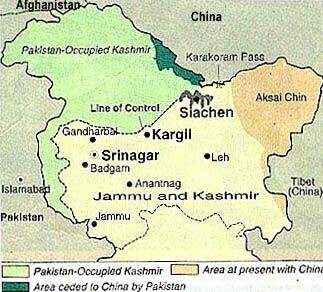Leaders across India’s political spectrum paid their tributes to India’s armed forces and the fallen martyrs on the occasion of the 24th anniversary of the Kargil Vijay Diwas.
The Kargil War
- The Kargil War officially ended on July 26, 1999, with the eviction of the last remaining Pakistani troops and infiltrators from positions on the Indian side of the Line of Control (LoC).
- The conflict was triggered when infiltrators from Pakistan crossed the LoC and occupied high positions in Ladakh’s Kargil district.
- The Indian forces slowly recaptured critical positions from the Pakistanis.
Challenging conditions
- The Kargil battlefield lies in a cold desert with winter temperatures going as low as – 30 degrees Celsius.
- While the summers are more pleasant, chilly winds and the barren landscape still make the battlefield highly inhospitable.
- The cold impacts both the men and the machines – guns jam while their operators expend great amounts of energy to keep the body warm.
- The high altitudes also pose the challenge of reduced Oxygen levels in the air, which causes a wide range of physiological effects and illnesses.
- The most common altitude related illness is acute mountain sickness, which leads to headaches, nausea, appetite loss, muscular weakness and general fatigue.

Impact on weapons and aircraft:
- Low air pressure alters the accuracy and performance of both weapons and aircraft.
- While lower air pressure increases the range of the projectiles fired, accuracy and predictability suffer.
- Aircraft engines typically produce less power and helicopters lose rotor efficiency.
Strategic problems:
- The terrain itself dictates military strategy and imposes significant restrictions on soldiers.
- The terrain reduces mobility, often provides cover to the enemy, and limits the scope of operations.
- During the Kargil War, the Indian Army was at a particular disadvantage with the enemy occupying high positions overlooking the positions held by Indians.
SOURCE: THE HINDU, THE ECONOMIC TIMES, PIB
 Chinmaya IAS Academy – Current Affairs Chinmaya IAS Academy – Current Affairs
Chinmaya IAS Academy – Current Affairs Chinmaya IAS Academy – Current Affairs

